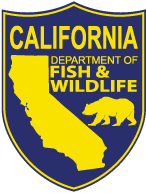
|
The California Department of Fish and Wildlife (CDFW) recently completed its 2019 stocking of fingerling Kokanee and landlocked Chinook Salmon, planting more than 1.45 million of the popular sport fish into inland waters where they will provide recreational angling opportunities in two to three years after growing to catchable size.
This year’s stocking consisted of releasing 792,942 fingerling Kokanee Salmon into 16 waters and 672,734 sterile, fingerling Chinook salmon into eight waters. Additional allotments of the sterile – or “triploid” – Chinook Salmon are scheduled to be released later this fall into northern California’s Lake Oroville, Lake Shasta and Trinity Lake.
The 2- to 4-inch fish are stocked into landlocked, inland waters to provide a diverse fishing experience where natural reproduction is insufficient to provide a high-quality angling experience. Anglers can expect excellent opportunities in these waters in two to three years when these fingerlings reach catchable size. Stocking fingerling-sized fish is a very cost-effective way to maintain these popular, inland recreational fisheries.
After a record Kokanee egg take in 2018, CDFW had an additional number of Kokanee fingerlings available for release this year. These fish were surplus to stocking goals. To provide and enhance recreational opportunities, CDFW released these additional Kokanee into Lake Shasta in Shasta County, where anglers can expect a new fishing opportunity in the next few years. Kokanee Salmon are the landlocked version of the Sockeye Salmon native to Alaska and the Pacific Northwest. Instead of migrating to the ocean, the landlocked Kokanee often are able to reproduce naturally in feeder streams, inlets and along gravel shoreline in the lakes where they are stocked. Like all Pacific salmon, Kokanee die after spawning.
Monitoring and evaluations of these fisheries are vital to providing a balance between numbers of fish and their average size. Stocking too many fish may provide an abundance of fish, but not produce fish of a desirable size. To evaluate stocking efforts, CDFW has begun marking stocked Kokanee Salmon prior to their release. In 2018, CDFW marked Kokanee that were released into Stampede Reservoir in Sierra County. In 2019, marked Kokanee were released into New Melones Reservoir in Calaveras and Tuolumne counties. All fish were marked with an adipose fin clip for easy identification and to distinguish from naturally spawned fish.
To assist in these evaluations, CDFW has partnered with the California Inland Fisheries Foundation, Inc. (CIFFI) and Kokanee Power (KP) to develop an online angler survey. The Kokanee & Inland Chinook Anglers Survey allows anglers to provide catch and effort data from any device with internet connectivity. Anglers are asked to report their effort and catch, both the number kept and released by size class, for each angling day. This data will assist fisheries managers in evaluating management goals for these fisheries.
CDFW would like to thank volunteers from CIFFI and KP for their continued cooperation assisting with the Landlocked Salmon Program. The careful planning, coordination and funding provided by these two organizations have contributed to the success of this program.
###
Media Contacts:
Kyle Murphy, CDFW Fisheries Branch, (916) 375-5483
Kirsten Macintyre, CDFW Communications, (916) 322-8988